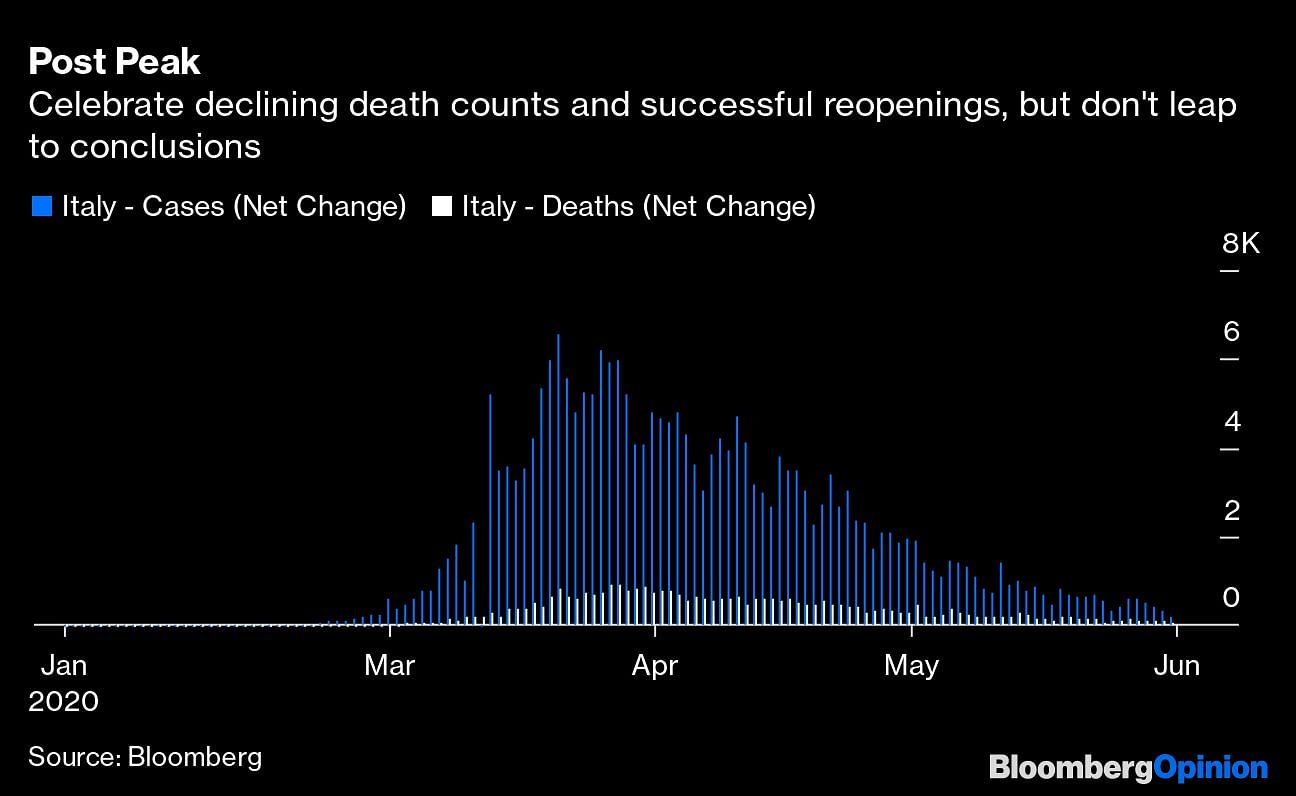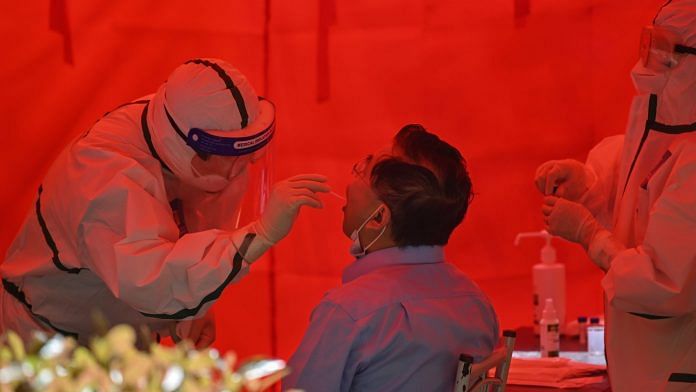It’s natural to want some good news in troubling times. There are potential dangers in reading too much into things.
In Italy, there’s an ongoing public debate about a possible encouraging shift toward a weaker version of Covid-19. A leading virologist and doctor have endorsed this idea as the number of deaths, cases, severely ill patients and viral load they’ve seen on swabs are declining or holding steady even as the country reopens. The virologist, Arnaldo Caruso, suggested that the virus could vanish even without a vaccine and that distancing and masks may no longer be needed soon.
Caruso did acknowledge the possibility of other explanations and a future resurgence in an interview; even so, the notion of a weakening virus is understandably popular and may well emerge in the variety of other nations that are past the worst of their outbreaks. There’s a high burden of proof for making such a claim, though, let alone using it as a basis for public health decisions. It most definitely hasn’t been met, and the mutation argument could lead to bad choices if taken too seriously.

Viruses change over time, sometimes in significant ways. These mutation-driven shifts are why we need new flu vaccines every year, and why seasonal outbreaks vary. There’s also an evolutionary trade-off between deadliness and transmission — a virus that kills too many hosts can’t spread — so some become milder.
Also read: Coronavirus isn’t the killer, our immune response is
Scientists working on vaccines speed up the mutation process to produce so-called live attenuated virus vaccines, which contain strains that produce immunity to the original virus but not a severe illness. The question is whether the virus that causes Covid-19, known as SARS-CoV2, might take this journey on its own.
There’s an enormous difference between a lull caused by a persistent shift in the virus, and one caused by other dynamics. The first means that the virus has a real chance of petering out as a major threat over time. The second scenario means that the virus could return with a vengeance if countries and individuals put their guard down. At the moment, there just doesn’t seem to be enough evidence to support the idea of a shift.
Coronaviruses are slow to mutate compared to influenza, and Covid-19 doesn’t appear to be different. Most mutations don’t result in any kind of meaningful change to how a virus acts. Early studies of SARS-CoV2 genomes have found genetic changes but not a lineage that meets the definition of a new strain, a branch of the virus that’s functionally different from others.
One pre-print look at over 15,000 genomes from the University College of London’s Genetics Institute examined the possible emergence of a more transmissible strain. The mutations it found appeared to be either neutral or slightly harmful to Covid’s spread, and a less infectious version is less likely to stick around. The researchers didn’t look at the possibility of a mutation that makes the virus less deadly, but said most recurrent genetic changes they’d seen so far don’t seem like evolutionary adaptations.
Even for pandemic flu — a virus much more given to rapid change than the one that causes Covid-19 — a few months would be a short timeline for a widespread functional mutation. There isn’t a clear-cut evolutionary case for a virus like SARS-CoV2, which has already managed to infect more than 6 million people and often causes mild symptoms, to quickly get milder. If anything, it seems more likely that it would be genetically stable.
Without a lot more data and information about the specific populations that are being compared for both swabs and clinical experiences, the evidence mutation fans provide remains anecdotal and may be compromised by selection bias. Less viral activity in lab experiments as described by Caruso could be more compelling, but he describes this as a very early result and it doesn’t appear to have been confirmed or tied to a biologic explanation.
If the virus isn’t shifting into a milder form, what else can explain why it doesn’t seem as bad in some places? The fact is, many other things could be at work. The virus may well appear weaker in areas on the other side of a peak because expanded testing and surveillance are catching people earlier in the course of their illness, as opposed to months ago when most were only tested if they got sick enough to brave a packed hospital. Clinicians also know more about how to treat people, and are no longer as overwhelmed.
A solid portion of those most vulnerable due to a weakened immune system or other factors have likely already been infected, especially in hard-hit areas in Italy. Those that haven’t are better protected by public health measures, a lower level of community spread, possible temporary seasonal effects, and at least some degree of acquired immunity in the population.
Given all that, the most prudent path for a long time to come is to treat Covid-19 as the deadly threat it was in Italy a short few weeks ago and continues to be around the world. – Bloomberg
Also read: India’s response to coronavirus can’t be based on existing epidemiological models







What even motivates you to write such articles? Dumbos
Because your a media outlet your role is to keep promoting fear. Good news doesn´t sell. So keep doing your thing, promoting fear, keeping people anxious, unemployed. Soon Fake News media will no longer exist because people see through your lies.